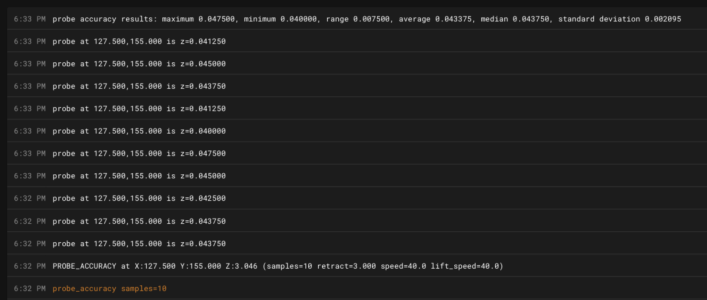ChrisA
Well-known member
Has anyone read about using ADXL345 as a bed probe?
When the printer head is not moving or more technically "not accelerating" the ADXL345 will read about 9.8 meters per second squared acceleration in the Z direction due to gravity. But let's say the nozzle moves down and crashes into the build plate. There would be a spike in the Z direction, well above 9.8
What if the "crash" were controlled and happened at low speed and the direction was revered as soon as the crash was detected? If the crash were soft enough it could be used for bed probing.
Advantage? (1) Many Voron toolheads already have ADXL345 chips permanently attached. CAN bus boards seem to include the chip. so the bed probe is free and already installed and wired, all that is needed is software. (2) The V0.2 printer has no easy way to attach a tap or click style probe and again the ADXL345 is far less complex as there would be no moving parts. (3) Accuracy could be as good as one micro step in Z direction.
Disadvantage? Maybe a "controlled crash" is too hard to program and the technique would break stuff and dent the build surface.
Does anyone know if this has been tried?
When the printer head is not moving or more technically "not accelerating" the ADXL345 will read about 9.8 meters per second squared acceleration in the Z direction due to gravity. But let's say the nozzle moves down and crashes into the build plate. There would be a spike in the Z direction, well above 9.8
What if the "crash" were controlled and happened at low speed and the direction was revered as soon as the crash was detected? If the crash were soft enough it could be used for bed probing.
Advantage? (1) Many Voron toolheads already have ADXL345 chips permanently attached. CAN bus boards seem to include the chip. so the bed probe is free and already installed and wired, all that is needed is software. (2) The V0.2 printer has no easy way to attach a tap or click style probe and again the ADXL345 is far less complex as there would be no moving parts. (3) Accuracy could be as good as one micro step in Z direction.
Disadvantage? Maybe a "controlled crash" is too hard to program and the technique would break stuff and dent the build surface.
Does anyone know if this has been tried?


